The Monday Charge: December 4, 2023

Presenting the first edition of our new weekly Monday article, focusing on the large cap S&P 500 index. Just the information you need to start your investing week. As always, 100% generated by AI and Data Science, informed, objective, unbiased, and data-driven.
AI stock picks for the week (Large Cap S&P 500)
- Mailed to FREE newsletter subscribers
- Mailed to FREE newsletter subscribers
- Mailed to FREE newsletter subscribers (Covered on Tuesday)
- Mailed to FREE newsletter subscribers
- Mailed to FREE newsletter subscribers
(Based on a three month forward looking window)
The biggest movers last week on price and volume (Large Cap S&P 500)
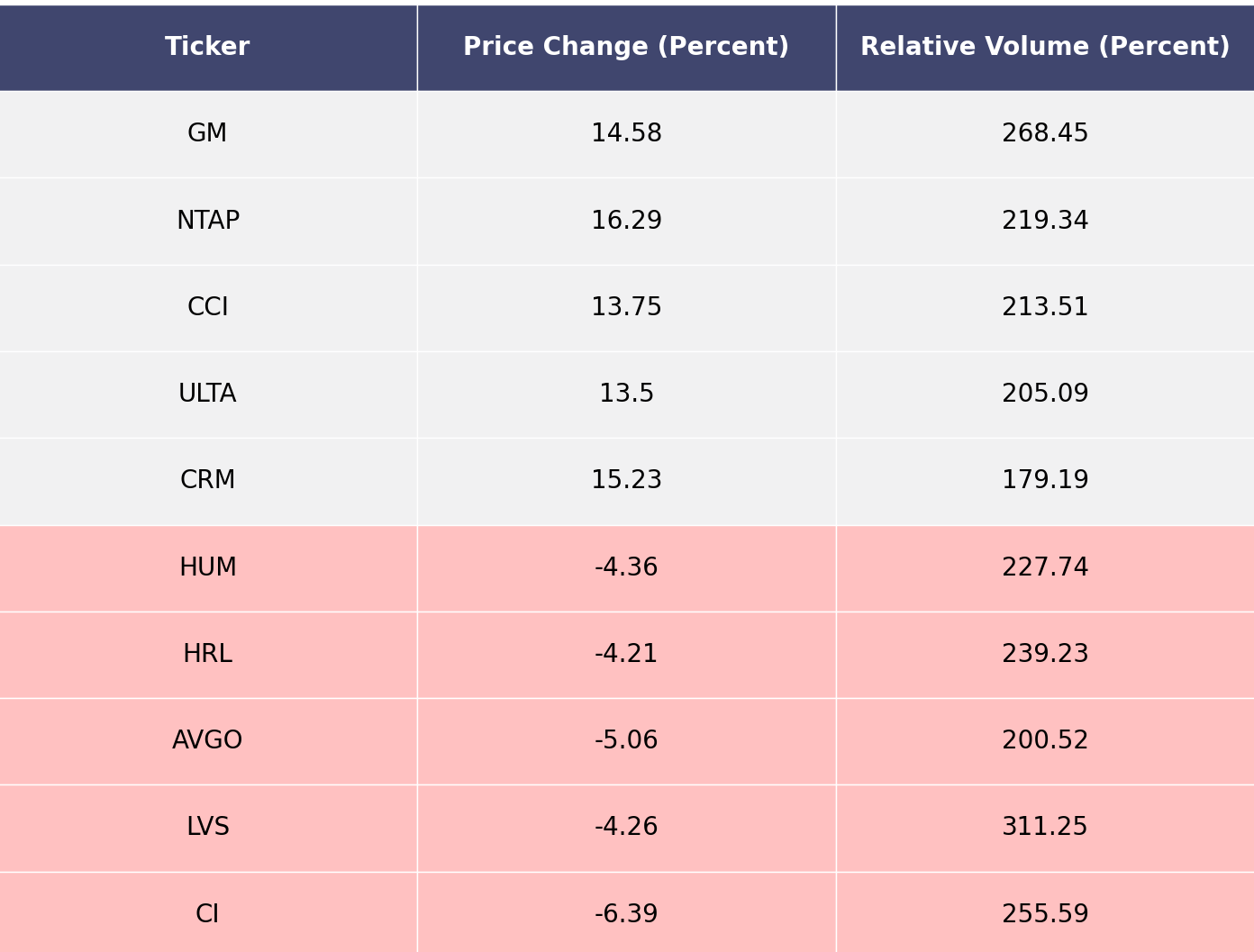
Price and volume moves last week for every stock and sector (Large Cap S&P 500)
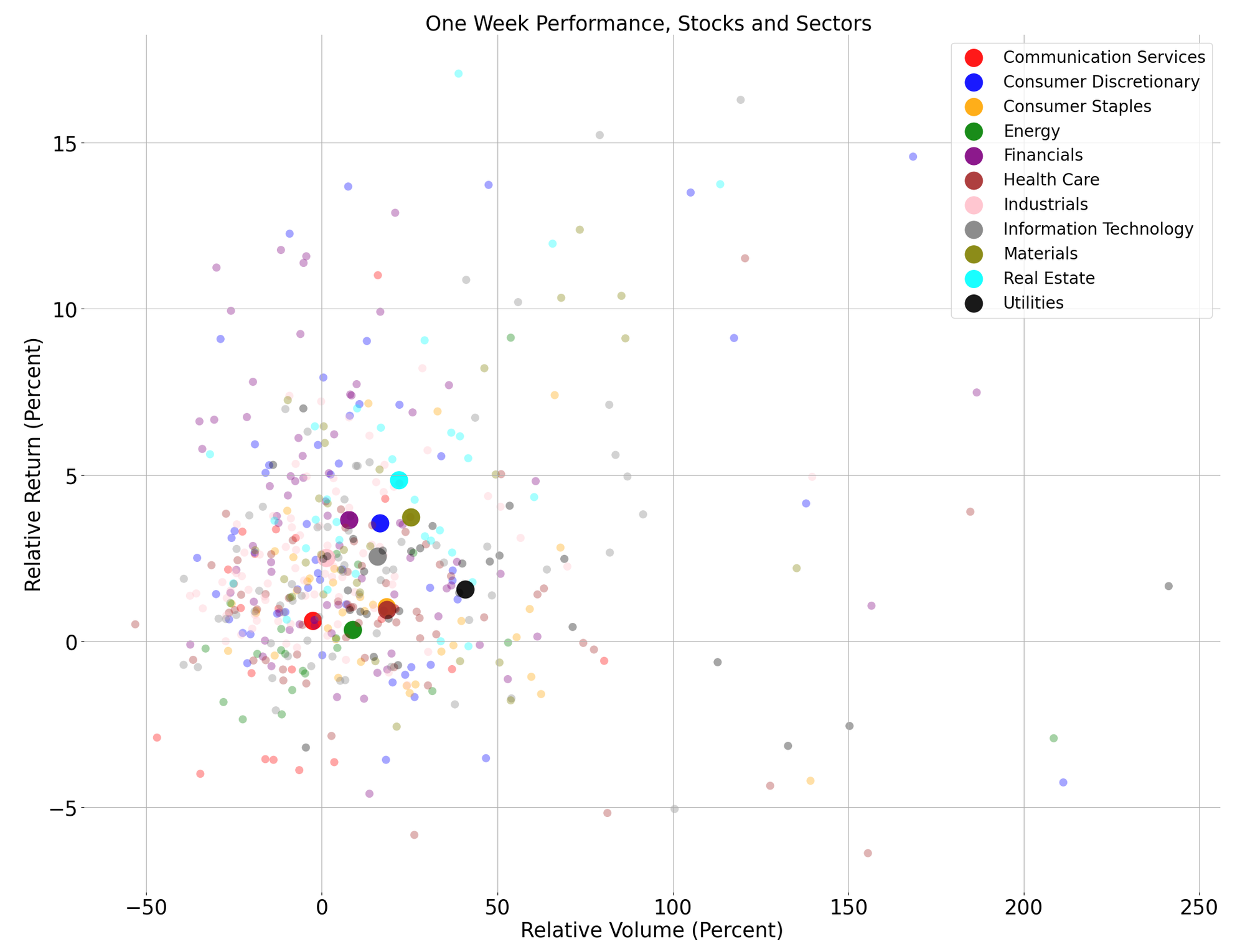
A technical analysis across indices
S&P500
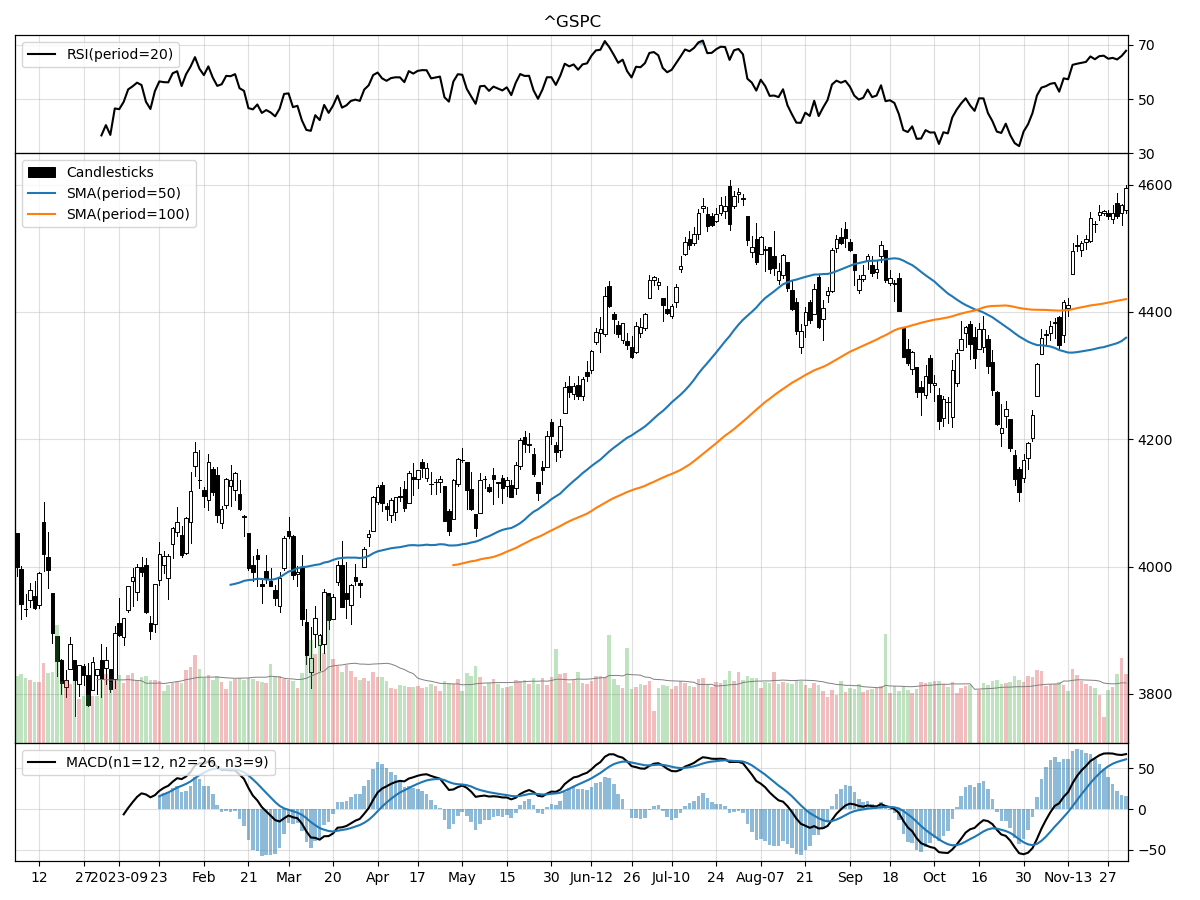
Nasdaq
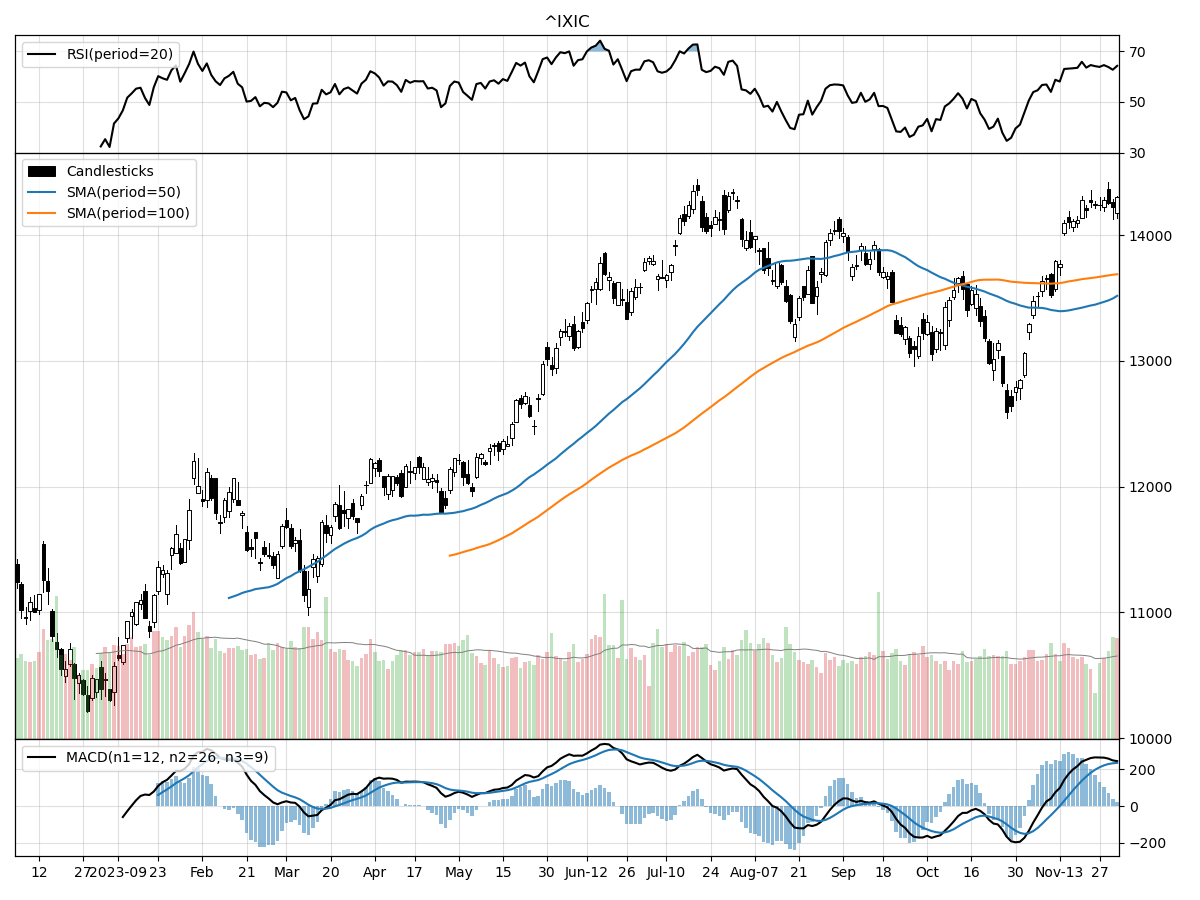
Russell 2000
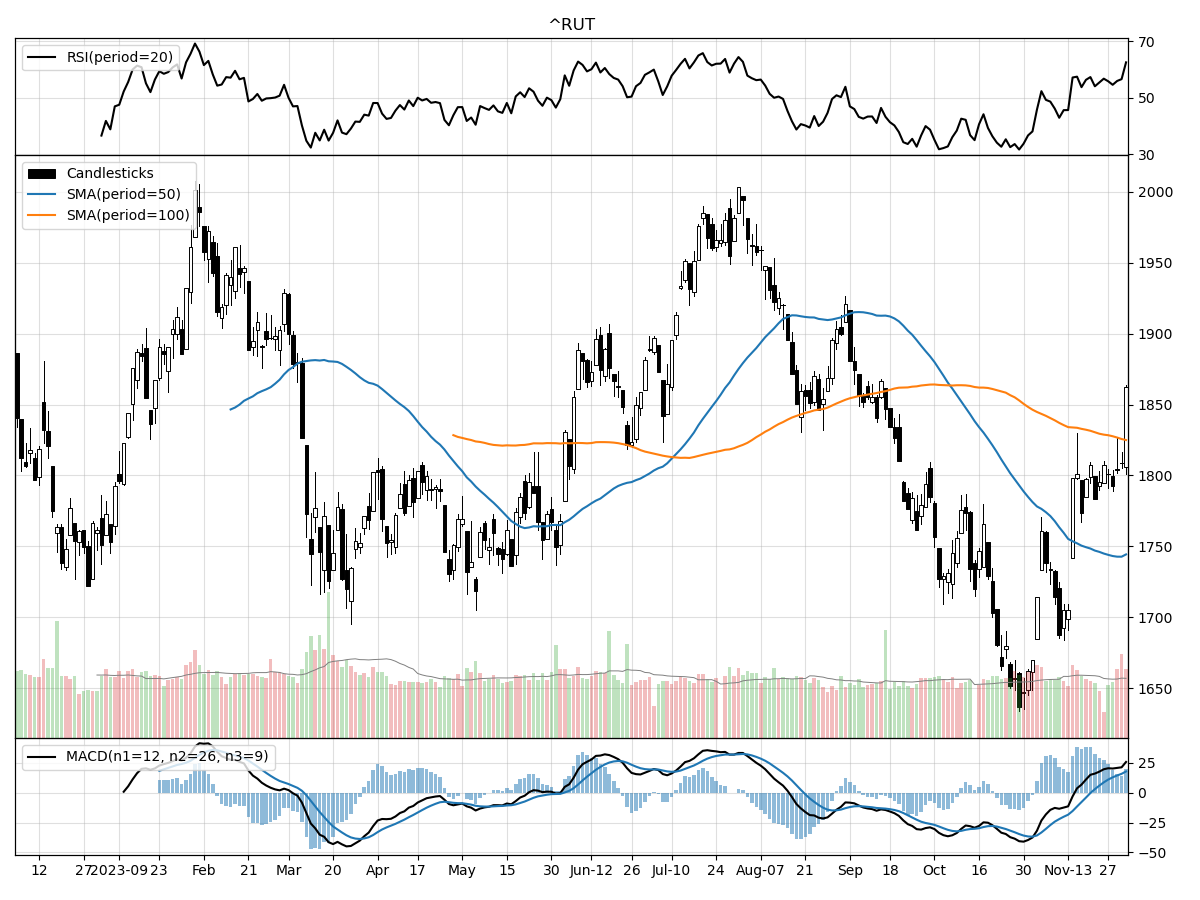
In analyzing the technical performances of the S&P 500, Nasdaq, and Russell 2000 indices, there are some notable similarities and differences. All three indices exhibit bullish momentum according to their respective MACD (Moving Average Convergence Divergence) readings. This indicator suggests a positive trend for the equities market as a whole, with the Nasdaq showing a particularly strong bullish signal at 233.9 compared to the S&P 500 at 61.02 and the Russell 2000 at 17.60. Additionally, each index is currently experiencing moderate buying pressure and signs of accumulation, indicating an inflow of money into the markets and potentially higher demand for equities.
However, there are key distinctions in their recent performance metrics. The S&P 500 and Russell 2000 are both modestly overbought according to their RSI (Relative Strength Index), whereas the Nasdaq is indicated as only modestly overbought, which could imply a slightly less stretched valuation in the tech-heavy index. The S&P 500's current price is at its 52-week high, showing a strong recovery from its lows, while the Russell 2000 remains 7% below its 52-week high, suggesting that small-cap stocks have not yet fully reached their previous peaks and may have more room to grow or still face headwinds.
In terms of recent performance, the Nasdaq has outperformed with a 6.13% rise over the last month, compared to the S&P 500's 5.42% increase and the Russell 2000's 5.79% gain. However, looking at a slightly longer term, over the last three months, the Nasdaq has experienced a larger decline of -3.95% compared to the S&P 500's -3.08% and the Russell 2000's marginal -0.60% downturn. This could be indicative of greater volatility in the tech sector, which is heavily represented in the Nasdaq. Overall, while the broader market indicators are bullish, investors may need to consider the relative volatility and current valuations of each index when making investment decisions.
Last week vs. history (Large Cap S&P 500)
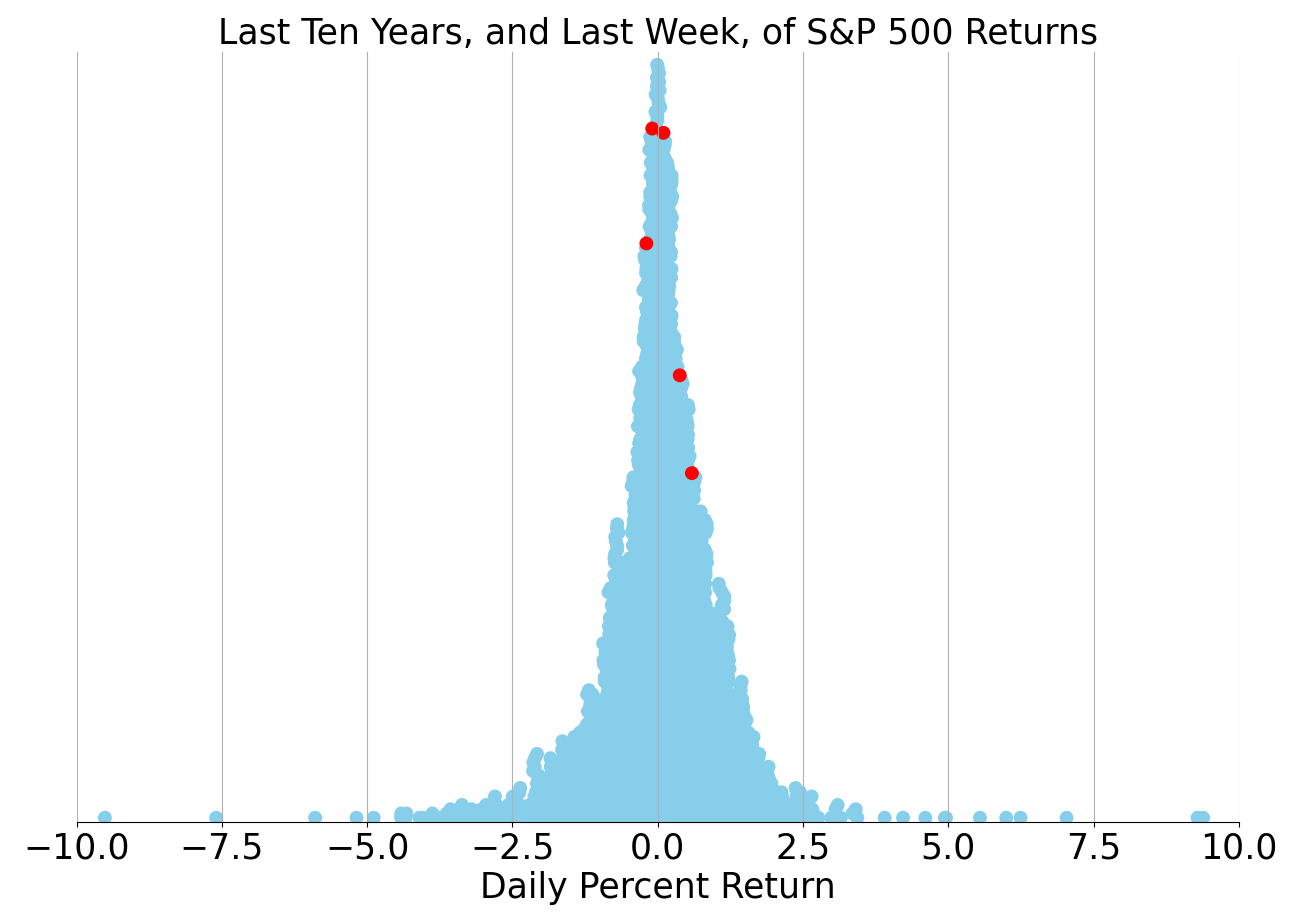
Market Commentary
Market Sentiment Wavers Amid Policy Shifts and Corporate Maneuvers
As the markets grapple with a confluence of regulatory changes and corporate developments, investors are recalibrating their portfolios in anticipation of the shifting landscape. The latest policy move by the U.S. government to restrict Chinese firms and battery components from qualifying for electric vehicle (EV) tax credits has sent ripples through the automotive and technology sectors. This initiative, aimed at bolstering domestic manufacturing and reducing dependency on foreign supply chains, may prove to be a double-edged sword, potentially accelerating local production while also igniting trade tensions.
The repercussions are palpable, as shares of EV manufacturers with significant supply chain linkages to China experienced heightened volatility. Market analysts are closely monitoring the response from Beijing and the potential for retaliatory measures that could further complicate the global trade environment. This uncertainty has led to a cautious approach among investors, who are seeking safe-haven assets and shying away from industries caught in the crosshairs of international policy disputes.
In the aerospace sector, the news of Boeing's elimination from the U.S. Air Force's 'Doomsday Plane' competition has dealt a blow to the aviation giant's stock. The decision underscores the competitive pressures facing defense contractors and raises questions about Boeing's strategy in a sector where government contracts are a crucial revenue stream. The development has prompted analysts to revise their earnings projections and cast a shadow over the company's near-term prospects.
The financial markets have also been abuzz with the legal tussle involving a former Wells Fargo CEO, who has filed a lawsuit against the bank seeking $34 million in withheld compensation. This high-profile case has brought renewed attention to the banking sector's governance practices and executive compensation policies. While the direct impact on Wells Fargo's stock has been muted, the broader implications for the industry's regulatory oversight cannot be ignored.
In a recent twist, a U.S. jury awarded $17.7 million to Kraft and other producers in an egg price-fixing case, highlighting the ongoing concerns about anti-competitive behavior in the commodities market. This verdict may have far-reaching consequences for the food industry, potentially leading to stricter scrutiny of pricing practices and supply agreements. Market participants are wary of the potential for increased litigation and fines that could affect the profitability of companies within this space.
The geopolitical arena remains tense, with North Korea's assertion that interference with its satellite program would constitute a declaration of war. Such stark rhetoric has stoked fears of escalating military conflicts, prompting investors to reassess the risk exposure of their international investments. The defense sector, in particular, could see an uptick in interest as governments around the world may look to ramp up their security capabilities in response to global instability.
In summary, the current financial narrative is one of caution and complexity. With the interplay of regulatory decisions, corporate disputes, and geopolitical drama, the stock market is navigating a period of heightened sensitivity. As investors parse through the news, seeking clarity and direction, the importance of a balanced and well-researched investment strategy has never been more evident. The coming weeks will be critical in determining whether these challenges will subside or if they will usher in a new era of market dynamics.




Comments ()